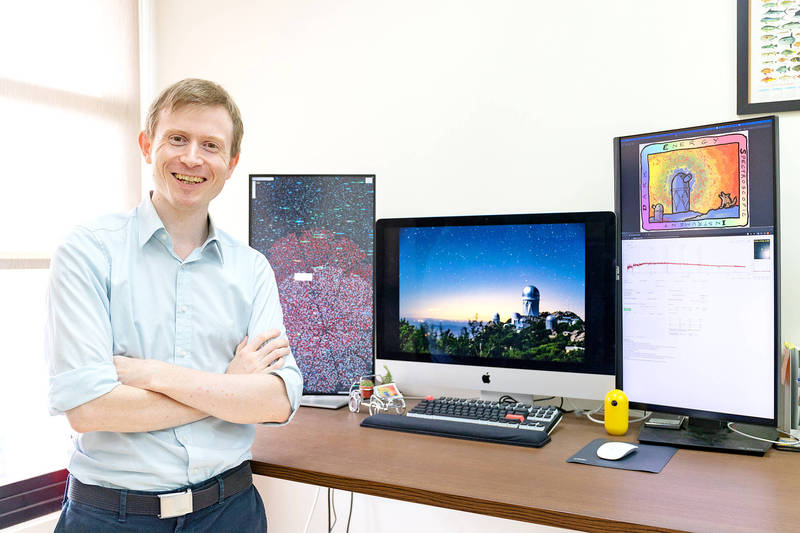《TAIPEI TIMES》Data from map of the universe released

National Tsing Hua University assistant professor Andrew Cooper poses in an undated photograph. Photo courtesy of Andrew Cooper
Staff writer
The first 2 million entries in a database to create a 3D map of the observable universe were released yesterday, made possible with contributions from National Tsing Hua University (NTHU) researchers.
The Dark Energy Spectroscopic Instrument (DESI) brings together more than 70 research institutions, and hundreds of scientists and engineers around the globe to create an interactive map showing the composition and movements of stars and galaxies.
“We’re making a 3D map of the universe,” said Andrew Cooper, a British assistant professor at NTHU’s Institute of Astronomy who is involved in the project.
The project is headed by the California-based Lawrence Berkeley National Lab and funded by the US Department of Energy’s Office of Science.
By 2025, DESI is expected to have data for more than 40 million galaxies, quasars and stars, including those in the Milky Way, distant galaxies, as well as supermassive black holes.
DESI was created to explore “dark energy,” what scientists believe is behind the acceleration of the expansion of the universe, Cooper said in a news release.
After a decade of planning and construction, instruments at Kitt Peak Observatory in Arizona began mapping the cosmos in 2021, he said.
DESI’s focal plane has 5,000 robotic positioners, each holding a fiberoptic cable to gather the light from an individual star or galaxy, Cooper said.
Its back end is filled with sensors to process spectral data that can be used to analyze how fast stars and galaxies are moving relative to Earth, and details about stars in the Milky Way, he added.
Cooper was one of the two leaders of the DESI Milky Way Survey to analyze the spectra of stars in our galaxy.
The first release of DESI data includes about 500,000 of these stars, the news release said, adding that the findings have been published in the Astrophysical Journal.
With enough spectral data from the Milky Way, Cooper hopes that astronomers could use DESI’s 3D map to test theories about the nature of dark matter.
The NTHU team working on DESI includes two doctoral students from the Institute of Astronomy — Namitha Kizhuprakkat from India and Liao Li-wen (廖俐雯) — as well as Department of Physics undergraduate Pu Sy-yun (蒲思云), the news release said.
National Taiwan University Institute of Astrophysics assistant professor Lan Ting-wen (藍鼎文) is also involved in the DESI project, coordinating a team to verify data.
More information can be found at https://data.desi.lbl.gov/doc.
新聞來源:TAIPEI TIMES












